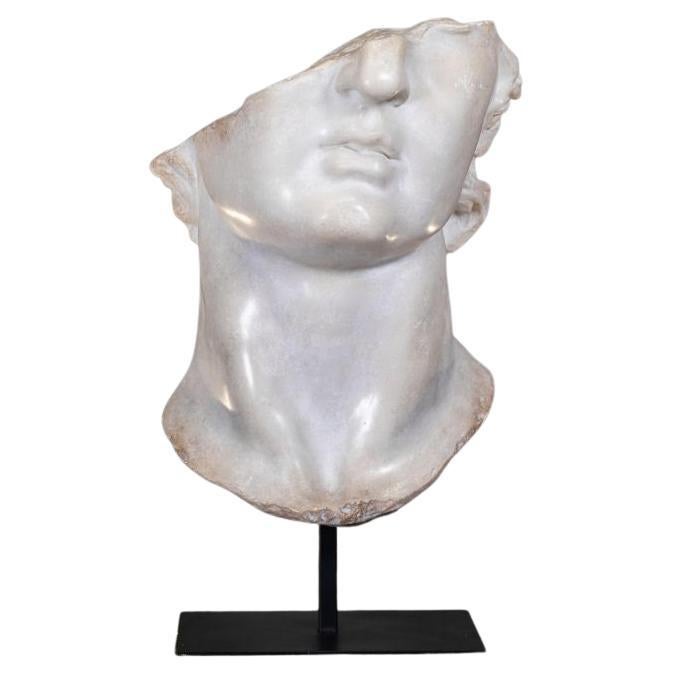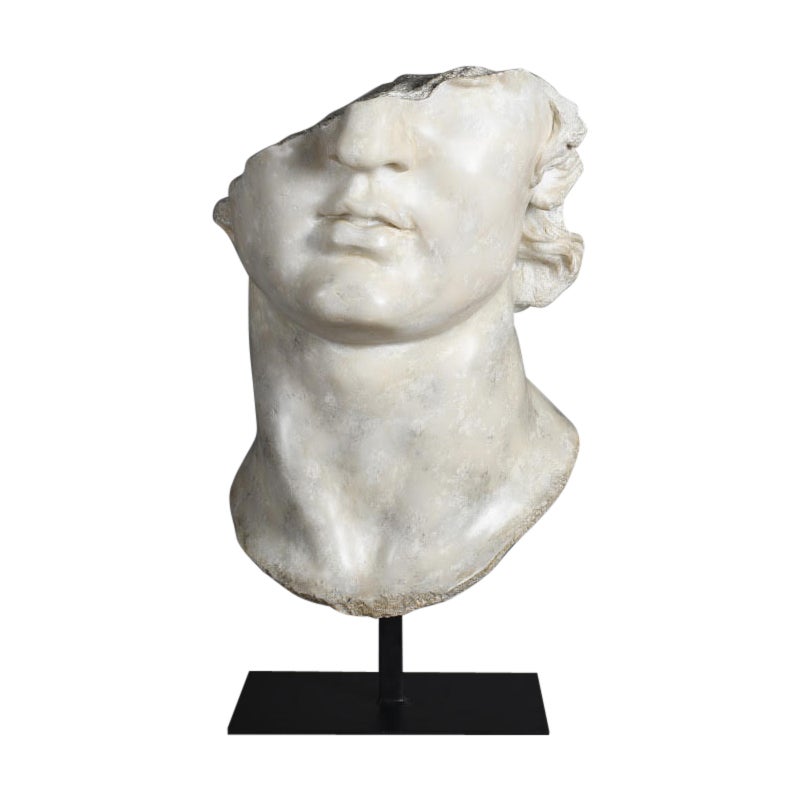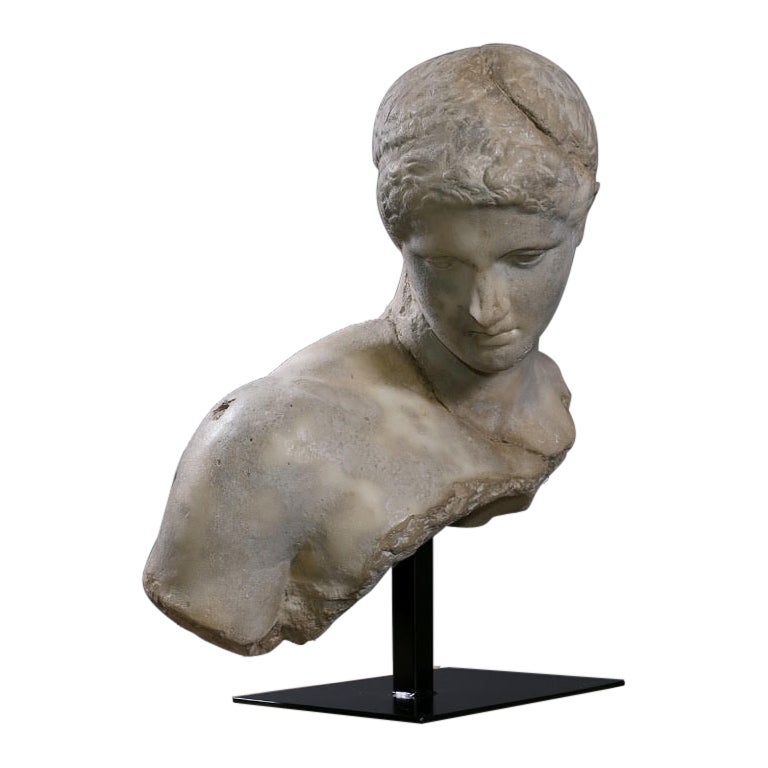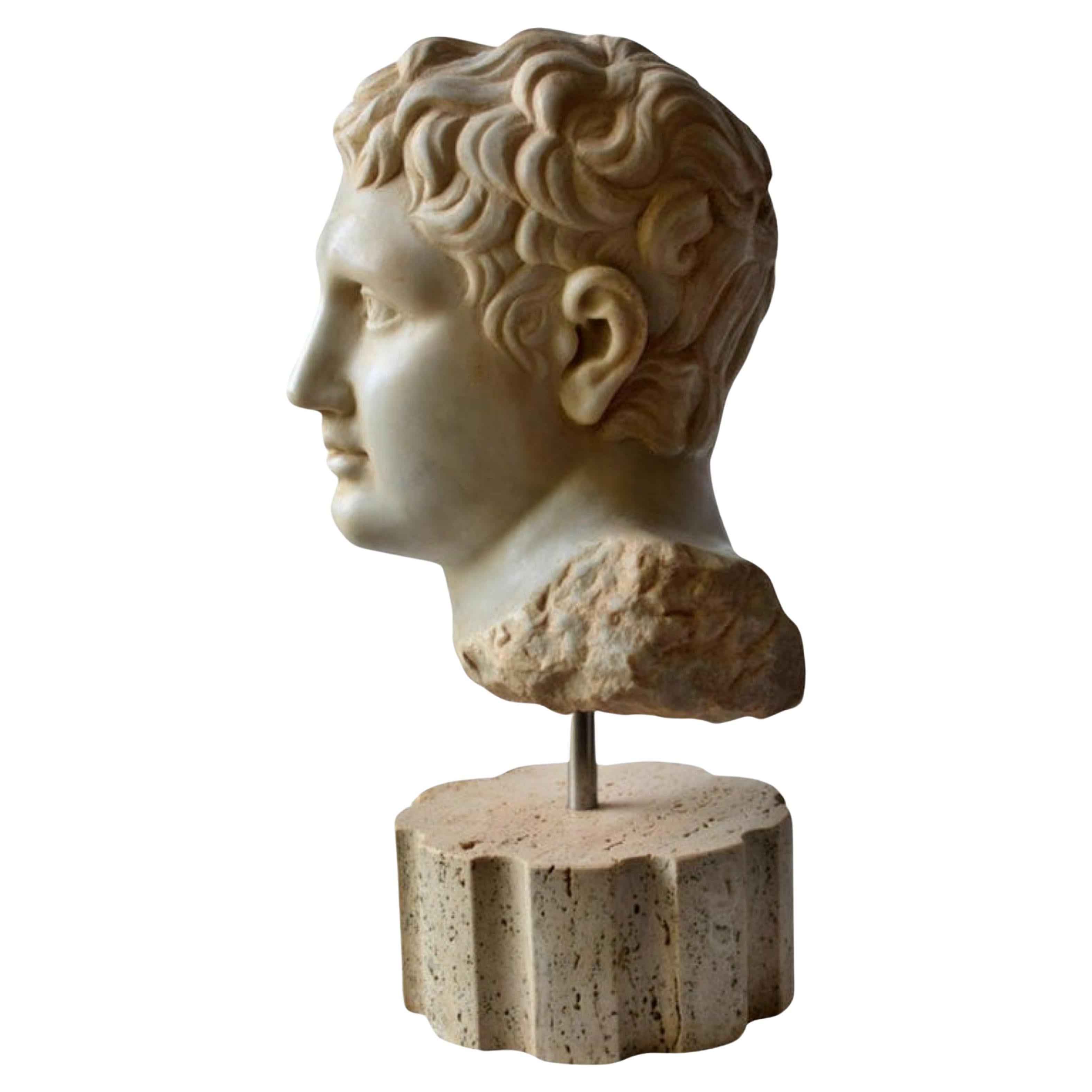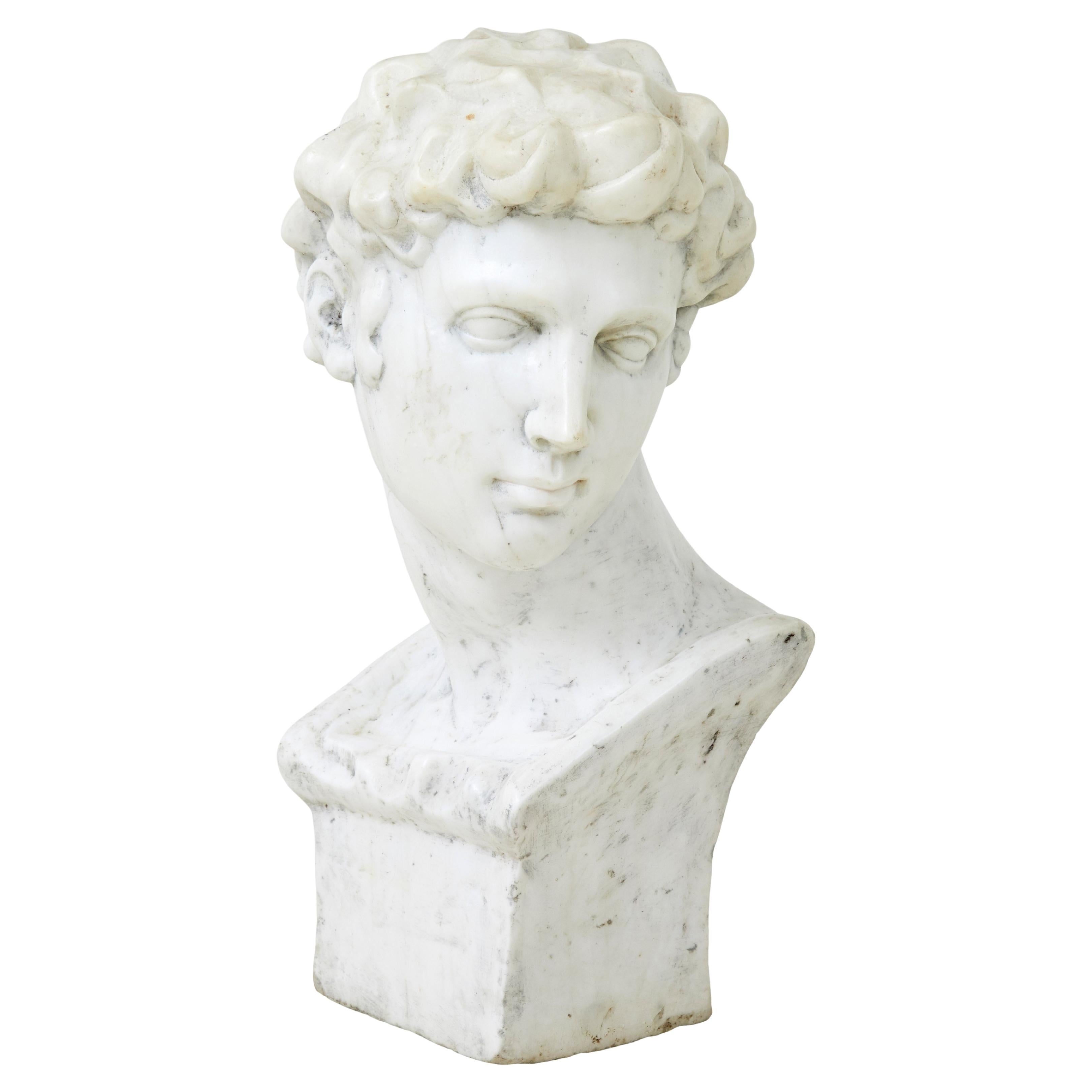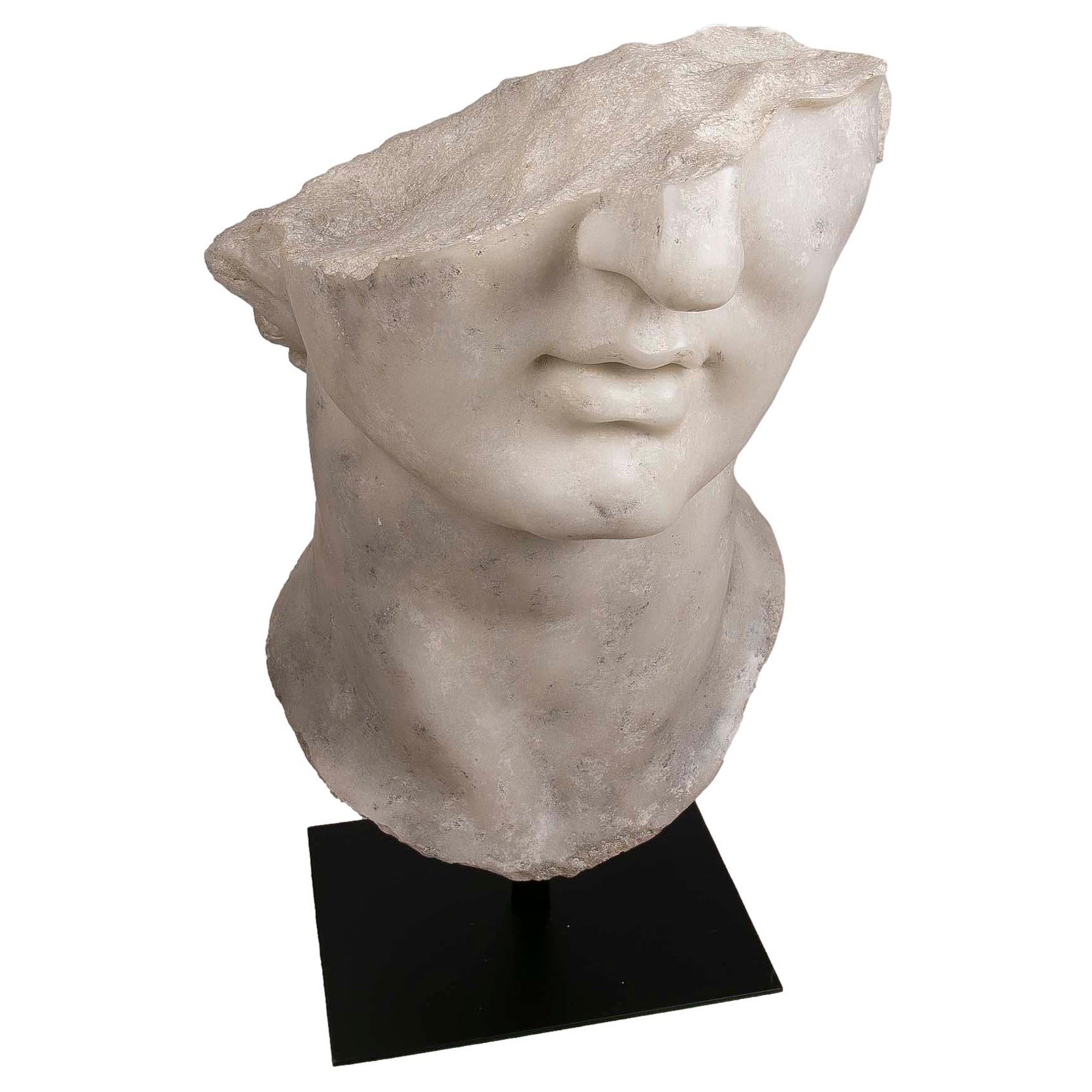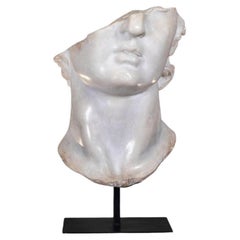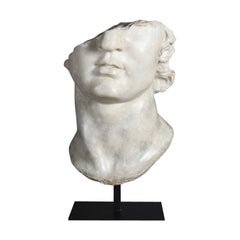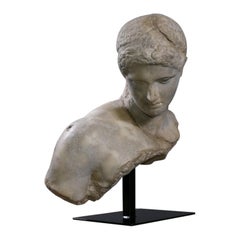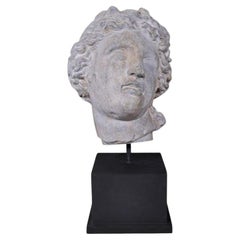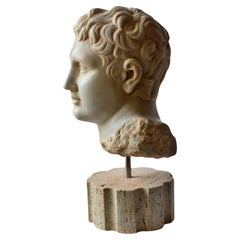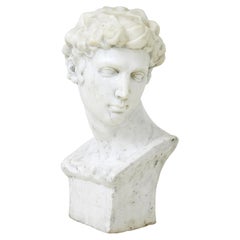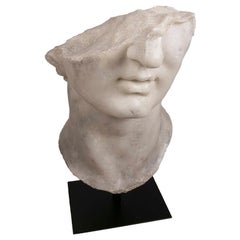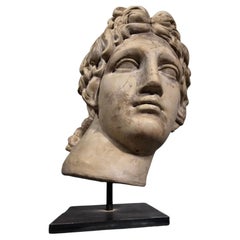Items Similar to Sculpture Representing a Fragment of the Bust of Apollo.
Want more images or videos?
Request additional images or videos from the seller
1 of 8
Sculpture Representing a Fragment of the Bust of Apollo.
$1,922.28
£1,407.70
€1,600
CA$2,616.70
A$2,932.99
CHF 1,527.12
MX$35,813.03
NOK 19,388.88
SEK 18,378.92
DKK 12,176.49
Shipping
Retrieving quote...The 1stDibs Promise:
Authenticity Guarantee,
Money-Back Guarantee,
24-Hour Cancellation
About the Item
Sculpture representing a fragment of the bust of Apollo.
Sculpture in resin and plaster, metal base, representing a fragment of a bust of Apollo, Greco/Roman style.
H: 63cm, W: 32cm, D: 33cm
- Dimensions:Height: 24.81 in (63 cm)Width: 12.6 in (32 cm)Depth: 13 in (33 cm)
- Style:Greco Roman (In the Style Of)
- Materials and Techniques:
- Place of Origin:
- Period:
- Date of Manufacture:21st century
- Condition:Wear consistent with age and use.
- Seller Location:Saint-Ouen, FR
- Reference Number:1stDibs: LU1530244746042
About the Seller
4.8
Platinum Seller
Premium sellers with a 4.7+ rating and 24-hour response times
Established in 2003
1stDibs seller since 2015
341 sales on 1stDibs
Typical response time: 1 hour
- ShippingRetrieving quote...Shipping from: Saint-Ouen, France
- Return Policy
Authenticity Guarantee
In the unlikely event there’s an issue with an item’s authenticity, contact us within 1 year for a full refund. DetailsMoney-Back Guarantee
If your item is not as described, is damaged in transit, or does not arrive, contact us within 7 days for a full refund. Details24-Hour Cancellation
You have a 24-hour grace period in which to reconsider your purchase, with no questions asked.Vetted Professional Sellers
Our world-class sellers must adhere to strict standards for service and quality, maintaining the integrity of our listings.Price-Match Guarantee
If you find that a seller listed the same item for a lower price elsewhere, we’ll match it.Trusted Global Delivery
Our best-in-class carrier network provides specialized shipping options worldwide, including custom delivery.More From This Seller
View AllMedium-Sized Resin Sculpture Representing a Fragment of the Sculpture of Apollo.
Located in Saint-Ouen, FR
Medium-sized resin sculpture representing a fragment of the sculpture of Apollo.
Sculpture representing a reduced model of a Fragment of the sculpture of Apollo, exhibited in the en...
Category
21st Century and Contemporary French Modern Busts
Materials
Resin
Sculpture of a Head of Apollo in the Hellenistic Style, 21st Century.
Located in Saint-Ouen, FR
Sculpture of a head of Apollo in the Hellenistic style, 21st century.
Sculpture on base of a head of Apollo, in patinated plaster and resin, 21st century.
H: 65cm, W: 52cm, D: 50cm
Category
21st Century and Contemporary French Modern Busts
Materials
Resin, Plaster
Sculpture Representing the Bust of a Greek Sportsman in the Hellenistic Period.
Located in Saint-Ouen, FR
Sculpture representing the bust of a Greek sportsman in the Hellenistic period, 21st century.
Sculpture on base of a bust of a Greek sportsman, in patinated plaster and resin, 21st ...
Category
21st Century and Contemporary French Modern Figurative Sculptures
Materials
Resin, Plaster
Sculpture of the Head of Artemis in Patinated Plaster.
Located in Saint-Ouen, FR
Sculpture of the head of Artemis in patinated plaster.
Daughter of Zeus, Artemis is the sister of Apollo, goddess of hunting and the moon.
This statue comes from a cast made by an a...
Category
21st Century and Contemporary French Modern Busts
Materials
Plaster
Sculpture, Marble Bust of a Roman in the Taste of Antiquity.
Located in Saint-Ouen, FR
Sculpture, sculpted marble bust of a Roman in the taste of Antiquity, 20th century.
Bust, carved marble sculpture of a Roman in the taste of Antiquity resting on a black granite bas...
Category
21st Century and Contemporary French Greco Roman Busts
Materials
Granite, Marble
Bust in the Taste of Antiquity, 20th Century.
Located in Saint-Ouen, FR
Bust in the taste of Antiquity, 20th century.
Antique-style nude male bust in composite material, 20th century.
h: 70cm, w: 45cm, d: 22cm
Category
20th Century French Greco Roman Busts
Materials
Composition
You May Also Like
Italian Sculpture "Lisippea Apoxiomenos" Head Begin 20th Century Marble
Located in Madrid, ES
Italian sculpture
"Lisippea Apoxiomenos" Head
Begin 20th century
Marble
Measure: H: 46cm including the base
Perfect condition.
Category
Early 20th Century Italian Baroque Busts
Materials
Marble
20th century decorative marble bust in the Greco Roman style
Located in Debenham, Suffolk
20th century marble bust in the Grecian style circa 1950.
Good quality piece of interior or exterior decoration.
Made from solid marble and a 2 man lift this very heavy piece ideal...
Category
Mid-20th Century French Greco Roman Busts
Materials
Marble
Resin Bust Head of a Renaissance Character with Antique Finish with Base
Located in Marbella, ES
Resin Bust Head of a Renaissance character with Antique finish with base.
Category
2010s French Figurative Sculptures
Materials
Resin
Decorative Stone Head of Apollo - Classic Style
Located in Madrid, ES
Decorative Stone Head of Apollo - Classic Style
We present to you a classic decorative head of Apollo, finely carved in stone, ideal for lovers of ancient art and interior or exterio...
Category
Mid-20th Century Figurative Sculptures
Materials
Cast Stone
Life-size Roman Bust Sculpture, 20th Century
Located in Southall, GB
A life-size hand carved 20th century Roman Torso. The torso is carved from weathered statutory marble on a travertine base.
One of the most striking objects on display in the Mary a...
Category
20th Century European Busts
Materials
Marble
$7,242 Sale Price
20% Off
Italian Plaster Doryphorus Bust Originally by Polykleitos
Located in Austin, TX
Antique Italian plaster bust from Italy made in the late Victorian period, circa 1900. The sculpture is supported by an ebonized wooden base. The bust is a portrait of Doryphorus ori...
Category
Antique Early 1900s Italian Busts
Materials
Plaster
More Ways To Browse
Fragment French
Roman Fragment
Cleopatra Bust
Composer Bust
Greek Male Bust
Julius Caesar Busts
Marble Bust Diana
Plaster Bust Of A Child
Pre Columbian Mask
Terracotta Bust Roman
Venetian Bust
Bronze Buddha Bust
Female Torso Bust
Julius Caesar Portrait
Roman Bust 1st Century
Art Deco Brass Bust
Artemis Bust
Beethoven Bust
